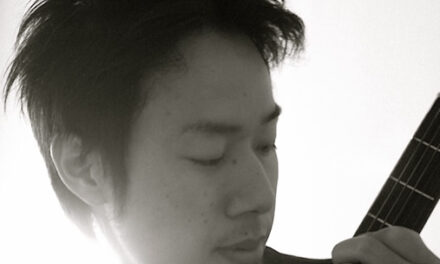There were a lot of unusual things at the North Carolina Symphony‘s latest performance in New Bern. There were people at the door requiring to see COVID vaccination cards; no one was admitted without one, or so they said. Next was the absence of printed programs; there were large placards with a QR code to scan for access to the program online. The usual information was there if one dug deep enough, but it seemed very inaccessible to me; I did not see any audience members looking at a phone. One of the people in front of me left after claiming their seats and came back with single-sheet programs that did not appear to have much information beyond the list of compositions and movements. Having scanned the QR code and squinted at my phone, I naturally asked, “where did you get that?” “At the Will Call desk,” was the answer; “our son (who looked to be about ten) doesn’t have a phone.”
The explanation, offered by the inevitable eastern North Carolina talking head before the music began, was that not having paper programs was a COVID preventative measure. The introduction went on to identify CarolinaEast Health System as the overall sponsor of the New Bern event. On the heels of a beautiful day, it was a shock to find the hall extremely cold, with the air conditioning on full blast; after the concert, it was delightful to go out into the evening air, that even at ten o’clock in March was warmer than the hall. That this was a stage performance was especially obvious from the diverse dress of the performers. The male musicians were all in crisp black tie; the female musicians almost entirely in black trousers and black tops; the two soloists in glittering floor-length ball gowns; the conductor was in a very plain business suit and four-in-hand tie. The Riverfront Convention Center, in spite of its carpet, is by no means the worst acoustic place for orchestral music.
This concert, conducted by Timothy Myers, featured Rachmaninoff’s Symphony No. 2 in E minor and prefaced it with two unusual and effective modern compositions.
First was living composer and NCS partner Anthony Kelley‘s “Crosscurrents: A Scherzo with Trio for Strings.” Kelley is a Duke graduate who went to the University of California in Berkeley for his doctorate, and has now returned home as associate Professor for the Practice of Music at Duke. “Crosscurrents” is a taste of what NCS patrons will hear from Kelley – in June of this year, he will premiere a new work with the NC Symphony celebrating Juneteenth. Wikipedia suggests that the term scherzo “can also refer to a fast-moving humorous composition that may or may not be part of a larger work.” That’s mostly perfect for this piece, although I found it to be totally serious. The critic’s role, although we often pretend otherwise, is odious comparison. In the case of a unique piece like “Crosscurrents,” I have nothing to compare it to. But it was interesting, not ugly, and believably played.
The second was Arvo Pärt‘s Tabula Rasa, rather like a string symphony or concerto grosso, with two solo violins, played by Karen Strittmatter Galvin and Jacqueline Saed Wolborsky. Their performance was commanding, with demands for the very top of the violins’ register, played at great speed. The piece has two movements, “Ludum” (game) and “Silentium” (silence). Both pieces had lots of fast and furious action, nimbly executed by the entire orchestra as well as the soloists. “Silentium” was punctuated by several long silences written into the score. While Pärt’s music is not to my taste, there was nothing boring about it. It was certainly a powerful vehicle and allowed the orchestra to show off its best skills.
Both of these pieces called only for strings, so there was a fair amount of stage shifting during intermission, preparing for the piece that everyone seemed to be eager for: the popular and well-known Symphony No. 2 in E minor by Sergei Rachmaninoff.
The first movement (Largo – Allegro moderato) starts very darkly, but has moments of incredible, lush, major-key beauty. Myers took the transition from Largo to Allegro with strong assurance, and then called for a very brisk tempo at the onset of the second movement (Allegro molto), where the lush strings were paired with the horns. The lyrical third movement (Adagio) seemed to be, from the expressions around, the delight of the evening.
The concluding movement (Allegro vivace) filled the hall with this most classic early-twentieth-century delight. There were one or two very minor intonation problems in the violins, but the performers quickly sorted this out. Myers led powerfully and got quite a physical workout himself. The players seemed to have their eyes on him and he was an important part of the success of this movement.
The whole symphony was beautiful and business-like and brought the audience to their feet at the conclusion.











